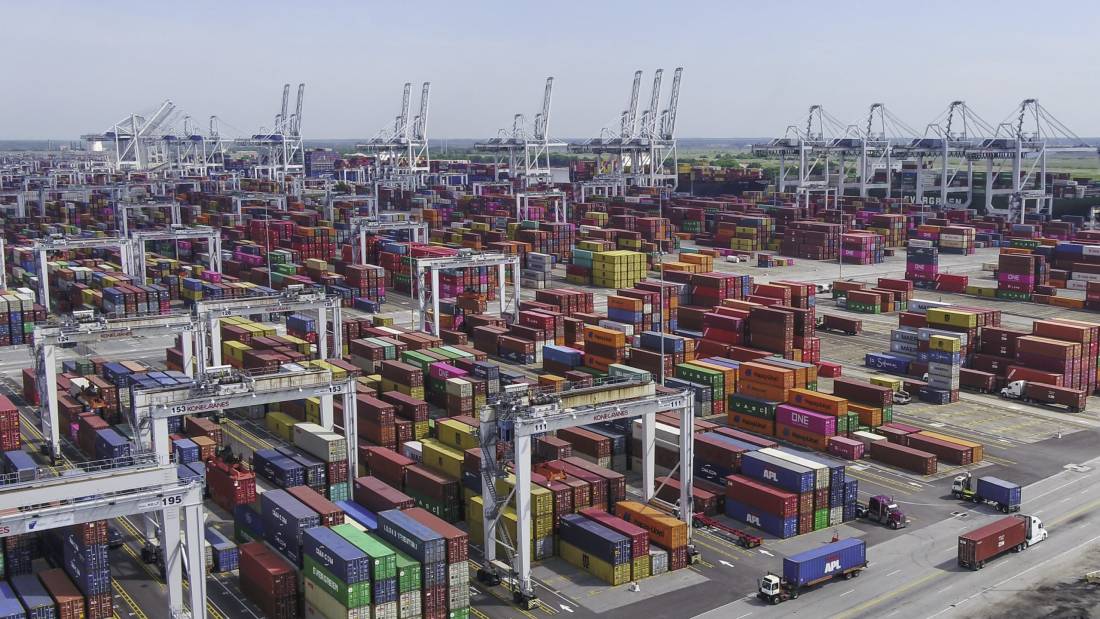
The Port of Savannah exported more loaded containers than any other port in the country from January through May, achieving a 12.2 percent market share. Garden City Terminal handled a total of 593,195 TEUs of loaded exports during the first five months of the calendar year.
“In today’s environment, businesses need every advantage to regain momentum and provide the growth that helps so many hard-working Americans to prosper,” said Georgia Gov. Brian Kemp. “The Georgia Ports Authority is a powerful economic engine for the state and a key link in the supply chain for industries across the region.”
Situated at the center of a broad logistics network, Savannah offers 37 weekly container ship services reaching destinations around the world, on-terminal service from Class I railroads Norfolk Southern and CSX, and direct access to Interstates 95 and 16.
“With the expansion of the Panama Canal, and the transition of larger vessels to East Coast services, cargo owners are making the strategic decision to keep imports on the water longer,” said GPA Executive Director Griff Lynch. “Subsequently, export customers enjoy greater empty container availability in Savannah, lower container slot costs on Neo-Panamax vessels, and unmatched cargo fluidity through road, rail and terminal services.”
Among Savannah’s top export commodities, the biggest gainers for the period were raw cotton, which grew by 61.0 percent (16,377 TEUs) for a total of 43,234 TEUs, woodpulp, up by 15.8 percent (11,539 TEUs) for a total of 84,595 TEUs, and kaolin clay, up 23.7 percent (7,964 TEUs) for a total of 41,527 TEUs.
“Our export numbers show how the Georgia Ports Authority plays a vital role as a state and national asset, supporting farms and factories across the country,” said GPA Board Chairman Will McKnight. “Terminal efficiency is about more than moving cargo quickly, it’s about helping American companies compete in the global marketplace.”
Georgia’s deepwater ports are still dealing with the impact of COVID-19, but have seen steadier trade numbers than other U.S. ports. In July, the Port of Savannah handled 360,700 TEUs, down 6.8 percent or 26,325 TEUs, compared to the same month last year. Total tonnage for the month dipped 3.1 percent, or 101,870 tons, for a total of 3.16 million tons for the first month of Fiscal Year 2021.
“Georgia’s diverse industry, its position as a major agricultural producer and its central location within the U.S. Southeast have helped to mitigate the worst impacts of the pandemic on trade through our terminals,” Lynch said. “Along with our partners in the International Longshoremen’s Association, motor carriers, railroads, stevedores and the distribution centers, we have been proud to provide steady, reliable service to our customers without delays or interruptions.”
Georgia’s deepwater ports and inland barge terminals support more than 439,000 jobs throughout the state annually and contribute $25 billion in income, $106 billion in revenue and $2.9 billion in state and local taxes to Georgia’s economy. The Port of Savannah handled 8.5 percent of U.S. containerized cargo volume and 10 percent of all U.S. containerized exports in FY2017.


Chattooga Sports
Indians Compete at Cedartown 7-on-7, Gear Up for Final Summer Camp

Georgia Lifestyle
DHS to End ‘Shoes-Off’ Travel Policy

Higher Education
DHS Sends Administrative Subpoenas to Harvard University

Bulloch Public Safety
06/23/2025 Booking Report for Bulloch County

Bulloch Public Safety
06/30/2025 Booking Report for Bulloch County

Bulloch Public Safety
06/16/2025 Booking Report for Bulloch County

Bulloch Public Safety
06/19/2025 Booking Report for Bulloch County

Bulloch Public Safety
7/03/2025 Booking Report for Bulloch County







